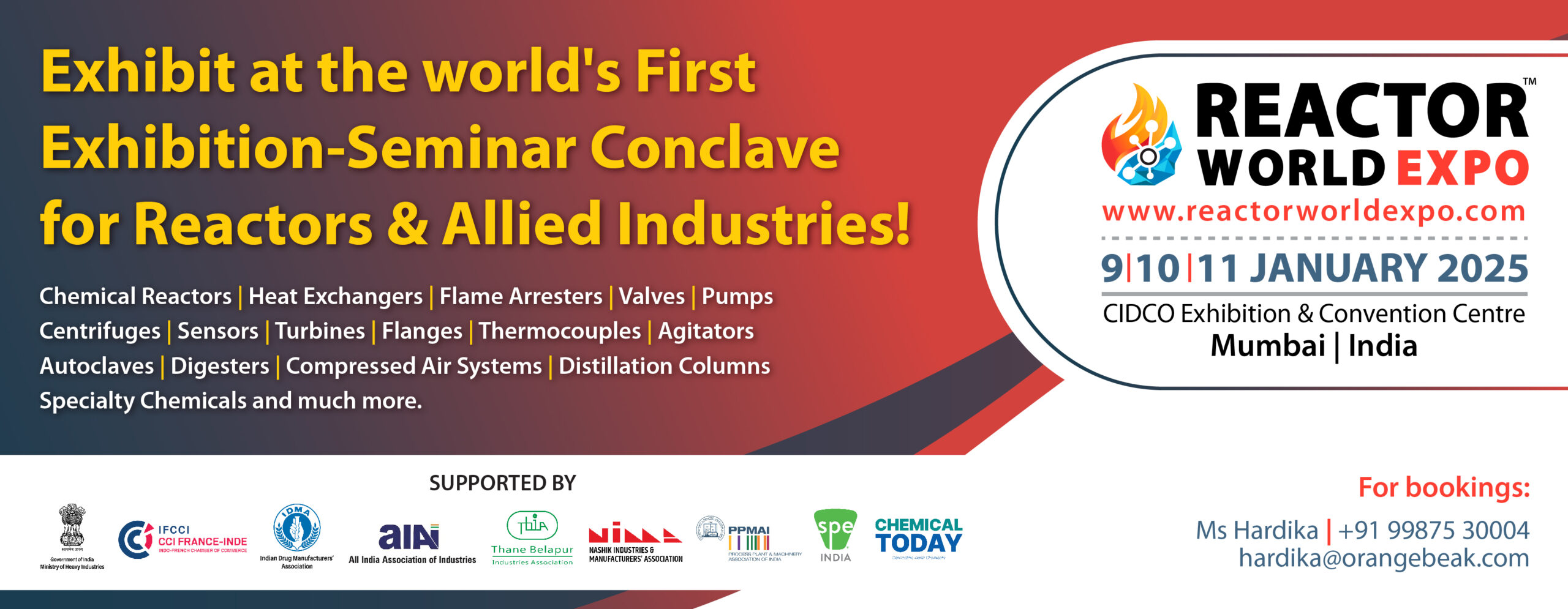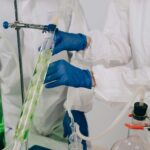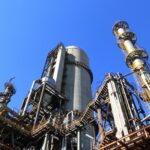Distillation, one of the most ancient and fundamental processes in the realm of chemical engineering and separation science, continues to play a crucial role in various industries. From purifying drinking water to refining crude oil and producing high-quality alcoholic beverages, distillation is the workhorse that ensures the separation of substances based on their differing boiling points. In this comprehensive guide, we will embark on a journey through the world of distillation, exploring its principles, applications, challenges, and innovations. We will also present a set of interview questions designed to assess a candidate’s knowledge and expertise in the distillation process.
Understanding the Distillation Process
Distillation, at its core, is a separation technique that exploits the differences in the boiling points of components in a liquid mixture to separate them. The process involves heating a liquid mixture to create vapor and then cooling that vapor to collect the separated components. The most well-known application of distillation is in the production of alcoholic beverages, but its applications span a wide array of industries.
Here’s a brief overview of the distillation process:
Heating: The liquid mixture, known as the feed, is heated in a vessel called a boiler. As the mixture is heated, the component with the lowest boiling point vaporizes first.
Vaporization: The vaporized component rises and enters a second vessel called the condenser, where it is cooled. This causes it to condense back into a liquid, which is collected separately.
Collection: The condensed liquid, now referred to as the distillate, is collected and separated from the remaining components, which may still be in liquid form. The distillate is often a more concentrated or purified form of the desired component.
The principle behind distillation is quite simple: the component with the lowest boiling point will vaporize first, leaving behind the higher-boiling-point components. This separation based on boiling points allows for the purification and concentration of various substances.
The Two Faces of Distillation: Simple and Fractional
Two primary methods of distillation are employed in various applications: simple distillation and fractional distillation.
Simple Distillation
Simple distillation is the more basic of the two methods. It is used when the components in a mixture have significantly different boiling points, making the separation relatively easy. In simple distillation, the liquid mixture is heated in a single container, and the vapor is collected and condensed into a separate vessel. This method is suitable for purifying or concentrating a single component from a mixture but is less effective when dealing with mixtures of compounds with close boiling points.
Fractional Distillation
Fractional distillation, on the other hand, is employed when dealing with mixtures of compounds with similar boiling points. It is a more complex and precise method that enhances separation by using a fractionating column. The column is filled with materials that allow for multiple vaporization and condensation cycles, which significantly improve the separation of closely boiling components. Fractional distillation is the preferred method for various applications, including the petroleum industry, where crude oil is separated into its different fractions (e.g., gasoline, kerosene, and diesel) based on their boiling points.
Diverse Applications of Distillation
Distillation is a versatile process with applications in a wide range of industries. Here are some of the primary sectors where distillation plays a pivotal role:
1. Petroleum Refining
In the petroleum industry, distillation is a core process in the refining of crude oil. Crude oil is a complex mixture of hydrocarbons with varying boiling points. Distillation towers, also known as crude oil distillation units, separate the crude oil into different fractions, each with distinct boiling points and applications. Gasoline, diesel, kerosene, and other products are produced through fractional distillation.
2. Chemical Manufacturing
Distillation is a common technique in chemical manufacturing for purifying, separating, and concentrating various chemical compounds. It is employed in the production of chemicals, pharmaceuticals, and specialty products.
3. Food and Beverage Industry
The distillation process is synonymous with the production of alcoholic beverages such as whiskey, vodka, and rum. It is used to separate and concentrate alcohol from fermented liquids. Additionally, it is employed in the production of flavorings, extracts, and essential oils.
4. Environmental Control and Wastewater Treatment
In environmental control and wastewater treatment, distillation is used to remove pollutants and contaminants from water sources. By evaporating water and leaving behind impurities, distillation contributes to the safe disposal of hazardous materials and the extraction of valuable resources.
5. Pharmaceuticals
The pharmaceutical industry utilizes distillation for the purification and separation of active pharmaceutical ingredients (APIs) and other compounds. Distillation is often part of the process for producing high-purity solvents and reagents.
6. Desalination
Desalination is the process of removing salt and other impurities from seawater to produce fresh water. Distillation, specifically multi-effect distillation, is a common method used for this purpose.
7. Aromatherapy and Perfumery
Distillation is integral to the extraction of essential oils from plants and flowers, a key process in aromatherapy and perfumery. The process separates the aromatic compounds from the plant material.
8. Energy and Ethanol Production
Distillation is used to produce ethanol from fermented feedstocks, such as corn or sugarcane, for use as a biofuel. It is also applied in the purification of biofuels.
Challenges and Considerations in Distillation
While distillation is a powerful and widely used separation technique, it is not without its challenges and considerations:
Energy Consumption: Distillation can be energy-intensive, particularly when dealing with mixtures of components with close boiling points. Innovations and efficient design are essential to mitigate energy consumption.
Azeotropes: Azeotropes are mixtures of compounds that boil at a constant temperature and composition. They can be challenging to separate through simple distillation and may require additional techniques or processes.
Corrosion and Material Compatibility: Depending on the chemicals involved, distillation equipment may be exposed to corrosive substances. Proper material selection and maintenance are critical to avoid equipment damage.
Waste Generation: In some distillation processes, waste products may be generated. Proper disposal or recycling of these byproducts is essential for environmental responsibility.
Scale and Fouling: The buildup of scale or fouling on distillation equipment surfaces can reduce efficiency and may require periodic cleaning and maintenance.
Innovations and Advances in Distillation
The world of distillation continues to evolve with innovations aimed at improving efficiency, reducing environmental impact, and expanding the range of applications. Some notable advancements include:
Improved Column Design: Innovations in column design and packing materials have enhanced the efficiency of fractional distillation, allowing for better separation of components with similar boiling points.
Advanced Control Systems: Modern distillation systems are equipped with advanced control and automation systems, which optimize energy use and improve process stability.
Renewable Energy Integration: The integration of renewable energy sources, such as solar or geothermal energy, is becoming more common to reduce the carbon footprint of distillation processes.
Membrane Distillation: A relatively recent innovation, membrane distillation uses hydrophobic membranes to separate vapor from the liquid phase. It has the potential to reduce energy consumption and increase separation efficiency.
Supercritical Fluid Extraction: A technique that combines supercritical carbon dioxide with distillation to extract and separate compounds, particularly in the food and pharmaceutical industries.
Hybrid Distillation Technologies: The combination of distillation with other separation techniques, such as adsorption or crystallization, has resulted in improved separation and resource recovery.
Interview Questions for Distillation Experts
If you are conducting an interview to assess a candidate’s knowledge and expertise in the distillation process, here are some questions to consider:
What is the fundamental principle behind distillation, and how does it work?
Can you explain the differences between simple distillation and fractional distillation? In which scenarios would you choose one over the other?
In the context of distillation, what are azeotropes, and how can they be addressed in separation processes?
What are the key components and their functions in a distillation setup, and how do they contribute to the separation process?
Can you discuss any challenges or issues that can arise during the distillation process and the strategies to overcome them?
How does the energy consumption in distillation processes impact their efficiency, and what strategies or innovations can be employed to reduce energy use?
What are the environmental considerations and potential waste generation in distillation processes, and how can they be addressed to minimize environmental impact?
In your experience, can you share examples of innovative technologies or practices in distillation that you’ve encountered or used to improve separation efficiency or reduce environmental impact?
How do you approach the selection of materials for distillation equipment to mitigate corrosion and ensure compatibility with the substances being processed?
For a specific industry or application, can you walk us through a real-world distillation process you’ve been involved in, highlighting the challenges faced and the solutions implemented?
What role does automation and control systems play in modern distillation processes, and how do they impact process efficiency and stability?
These interview questions are designed to gauge a candidate’s knowledge, practical experience, and problem-solving skills in the field of distillation. Tailor the questions to the specific requirements of the role or industry in which the candidate will be working.















